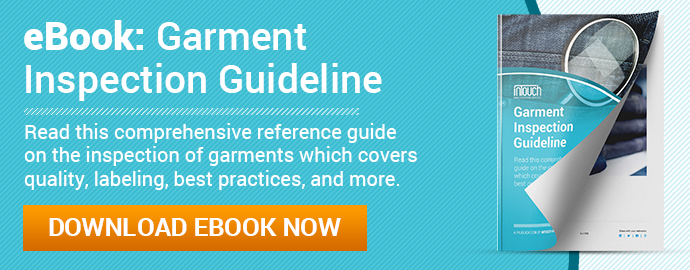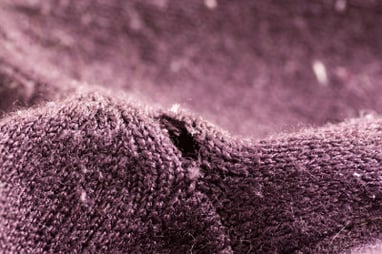 Shoppers typically buy a well-made shirt or blouse off a store shelf and take for granted that there are no noticeable loose threads or other product defects. In fact, most consumers have no idea of the processes involved in garment manufacturing and the defects that can occur along the way.
Shoppers typically buy a well-made shirt or blouse off a store shelf and take for granted that there are no noticeable loose threads or other product defects. In fact, most consumers have no idea of the processes involved in garment manufacturing and the defects that can occur along the way.
But softlines experts can appreciate the oversight needed to manufacture a single piece of clothing that’s defect free. Purchasers, product developers, quality managers and others in the industry tend to be keenly aware of the margin of error common to mass producing garments. They know that pre-shipment garment inspection is vital to ensuring the goods meet their quality standards.
Product inspection of garments is a highly specialized area within the realm of quality control. It has distinct processes and specific terminology to define parts of clothing and their defects. QC inspectors and other industry professionals use these standards to ensure garments conform to importer specifications. And straying from these standards during the production and inspection process could lead to an unsellable order of garments.
Understanding the different types of quality defects for garments and how to classify them is the first step to preventing or greatly reducing them. Let’s look more closely at how to classify garment defects for inspection.
Defining garment defects in a QC checklist
A quality control checklist—sometimes called an inspection criteria sheet (ICS)—is a vital document for inspection and consistent quality of any product, including garments. Your QC checklist for garments should outline dimensional tolerances for the product, any on-site tests you require during inspection and packaging specifications.
Another very important detail to include is a list of known quality defects for the product and how to classify them, typically as “critical”, “major” or “minor”. Some industry standards exist for classifying defects. But ultimately, no one knows your market and your customers better than you. Maybe you import high-end formalwear, and there are certain defects your customers won’t accept. Likewise, you may be importing less expensive denim jeans for customers who are more tolerant of the same defects.
Without a QC checklist that clearly outlines how different garment defects should be reported, your inspectors are left guessing and you receive less reliable reporting.
Critical defects for garments
A critical defect is one that presents a safety hazard to the user, might cause property damage or otherwise harm the end user of the product. A single critical defect found in a single garment typically results in the importer’s rejection of the entire order. Major reasons for such swift dismissal of an order containing a critical defect are that it: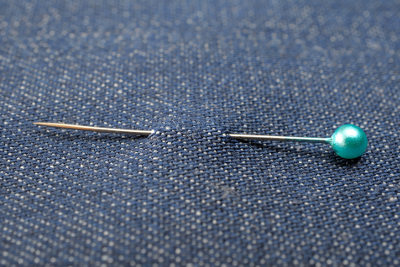
- Puts consumers at risk of bodily harm
- Threatens the reputation of distributors throughout the supply chain, and
- Exposes the brand to liability and unnecessary costs in the event of a product recall
One example of a critical garment defect is finding a needle or other sharp object included in the packaging of the finished goods. This isn’t a defect unique to garments. But due to the cutting and sewing processes involved in manufacturing softlines products, you’re more likely find it in these product types.
Another example of a critical defect is finding blood or mold on a garment. It might seem unlikely that you’d find blood on a garment. But just as a sharp object might find its way into packaging, a worker might accidentally cut himself during work. In this way, blood may end up on the product.
Garment orders are more likely to fail inspection due to mold, another critical defect that’s relatively common. A large portion of international garment production takes place in countries like Indonesia, Vietnam and others in Southeast Asia. Humid climates typical of that region make the garments there more vulnerable to mold during packaging and storage. Mold can spoil an entire order of garments if the factory doesn’t take action to prevent it.
Major defects for garments
Major defects are those which don’t pose a threat to the safety of the user, but don’t meet the importer’s specifications or golden sample. These defects typically lower the value or usability of the product, hurt salability and can lead to customer returns. Depending on the type and quantity found, major defects may prompt the importer to refuse an order, 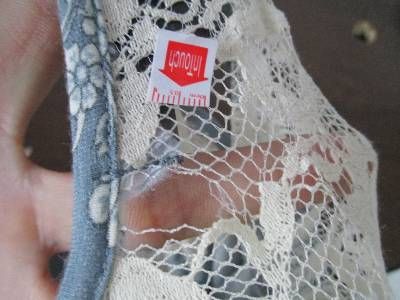 asking the supplier to hold it until they’ve addressed the quality issues found during inspection.
asking the supplier to hold it until they’ve addressed the quality issues found during inspection.
Factory workers may be able to reasonably repair or rework the defective garments. Other times, the factory cannot easily remedy major defects, and the importer may ask their supplier to cover the loss or manufacture replacement pieces. Some brands may also accept imperfect garments and offer discounts through special distribution channels, such as factory outlet stores and other retailers.
An example of major defects you may find in garments is incorrect colors or designs on the product. These are sometimes acceptable when the garments still have proper dimensions. While using the wrong colors or designs is not desirable, the clothes can usually be sold if they’re still proportionate and match standard size categories (e.g. S, M, L and XL).
Issues with sizing out of tolerances or incorrect stitching are often considered major defects that would result in the importer rejecting an order of garments. If the clothes don’t fit correctly or tear or fall apart easily, these products are likely to be returned by customers and tarnish the image of the brand on the label.
Minor defects for garments
Minor defects found in relatively small quantities typically don’t affect the salability of a product and aren’t normally identified by the customer. But they’re still issues outside of the standard the importer and supplier have agreed upon.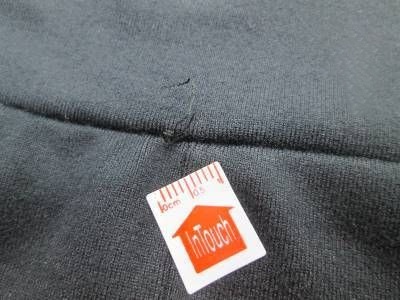
Minor garment defects can take many forms and include issues such as:
- Misprinting of “Made in Chins” instead of “Made in China” on a shipping carton
- Untrimmed threads, missing stitches or uneven stitching on a garment
- Minor variation in shading between garment pieces
- Variation of care label quality or content
Minor defects also include dirt and other materials on the surface of a garment that can be easily washed off. Such defects found in isolation are typically accepted by the importer. It’s when these defects are found in numbers outside the acceptable quality limit that they lead to failing product inspection.
Acceptable quality limits for garment inspection
Some relatively large, high-end garment brands insist on inspecting every piece of clothing in every order they import. But for most importers, 100-percent inspection is too costly and impractical. By relying on the internationally-recognized AQL standard, importers are able to get a reasonable look at a random sample of an order to check  conformance to their standards (related: The Importer's Guide to Managing Product Quality with AQL [eBook]).
conformance to their standards (related: The Importer's Guide to Managing Product Quality with AQL [eBook]).
AQL stands for acceptable quality limits and dictates how many random pieces to inspect based on lot size. It also determines the maximum number of critical, major and minor defects within that random sample that can be found without the order failing product inspection (related: How AQL Sampling Affects Your Product Inspection Results). This number comes from how strict the importer’s quality expectations are.
A garment importer might set a relatively low AQL for major defects like incorrect dimensions but a high AQL for minor defects like untrimmed threads. Importers can adjust these tolerances based on their unique circumstances and customer expectations. Brands known for flawless, stylish garments are likely to choose a more strict AQL tolerance, whereas someone buying promotional shirts might choose a more lenient one.
Conclusion
The best way to clarify your tolerance for various quality defects is to include defects in a detailed QC checklist and provide it to both your supplier and your inspector. An effective checklist offers quality control professionals the guidance they need to adhere to your standards during a garment inspection. It’s a very useful tool for setting black-and-white standards for what is and is not acceptable in your product.
Using a checklist, along with an appropriate AQL, will help you ensure consistent quality across all of your garment suppliers. And more consistent quality tends to lead to more consistently satisfied customers.
What other tips do you have for clarifying defects for clothing inspection? Share them in the comments section below!
